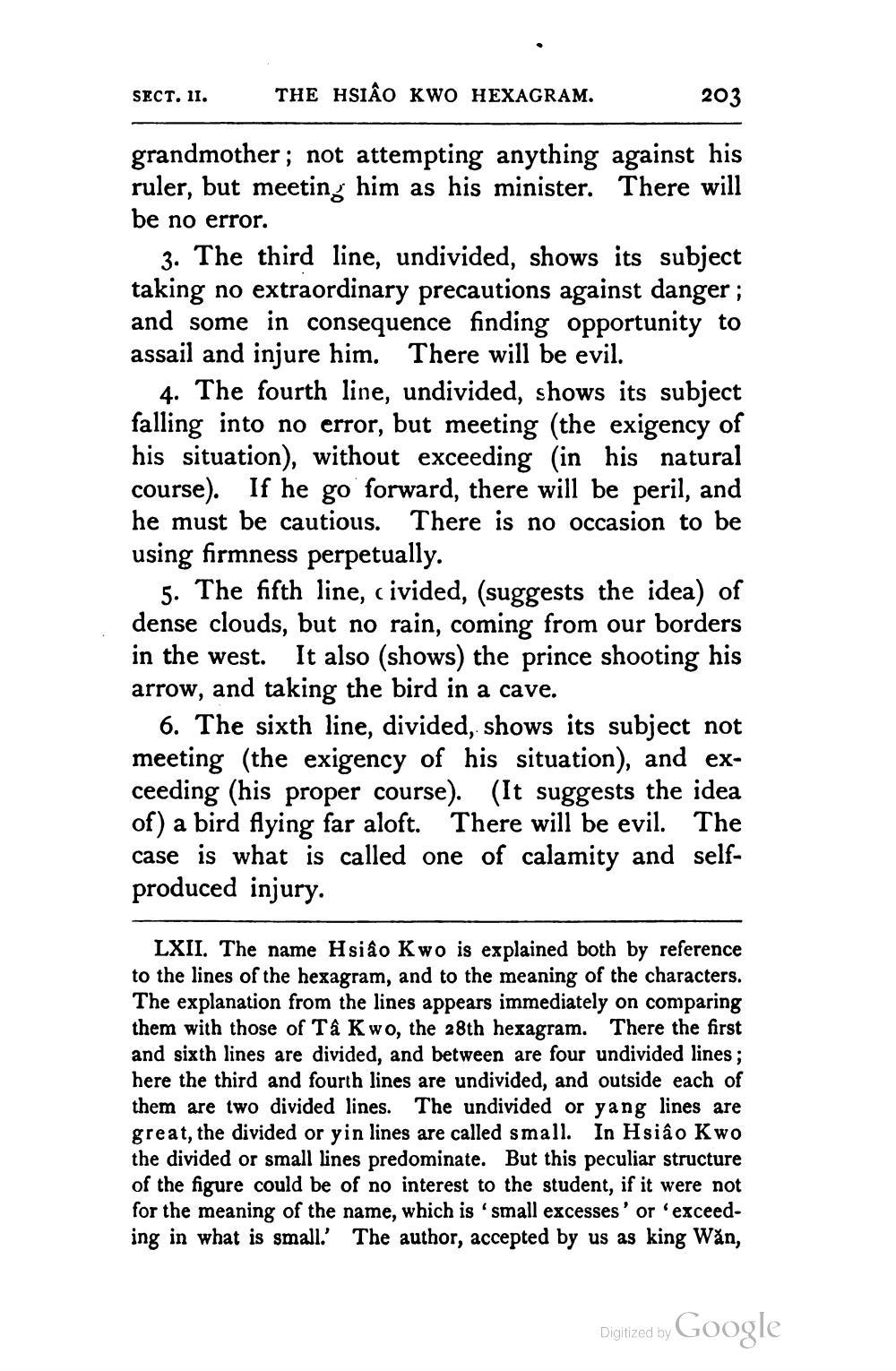________________
SECT. 11.
THE HSIÂO KWO HEXAGRAM.
203
grandmother; not attempting anything against his ruler, but meeting him as his minister. There will be no error.
3. The third line, undivided, shows its subject taking no extraordinary precautions against danger; and some in consequence finding opportunity to assail and injure him. There will be evil.
4. The fourth line, undivided, shows its subject falling into no error, but meeting (the exigency of his situation), without exceeding in his natural course). If he go forward, there will be peril, and he must be cautious. There is no occasion to be using firmness perpetually.
5. The fifth line, civided, (suggests the idea) of dense clouds, but no rain, coming from our borders in the west. It also (shows) the prince shooting his arrow, and taking the bird in a cave.
6. The sixth line, divided, shows its subject not meeting (the exigency of his situation), and exceeding (his proper course). (It suggests the idea of) a bird flying far aloft. There will be evil. The case is what is called one of calamity and selfproduced injury.
LXII. The name Hsiao Kwo is explained both by reference to the lines of the hexagram, and to the meaning of the characters. The explanation from the lines appears immediately on comparing them with those of Ta Kwo, the 28th hexagram. There the first and sixth lines are divided, and between are four undivided lines; here the third and fourth lines are undivided, and outside each of them are two divided lines. The undivided or yang lines are great, the divided or yin lines are called small. In Hsiao Kwo the divided or small lines predominate. But this peculiar structure of the figure could be of no interest to the student, if it were not for the meaning of the name, which is small excesses' or 'exceeding in what is small. The author, accepted by us as king Wăn,
Digitized by Google




